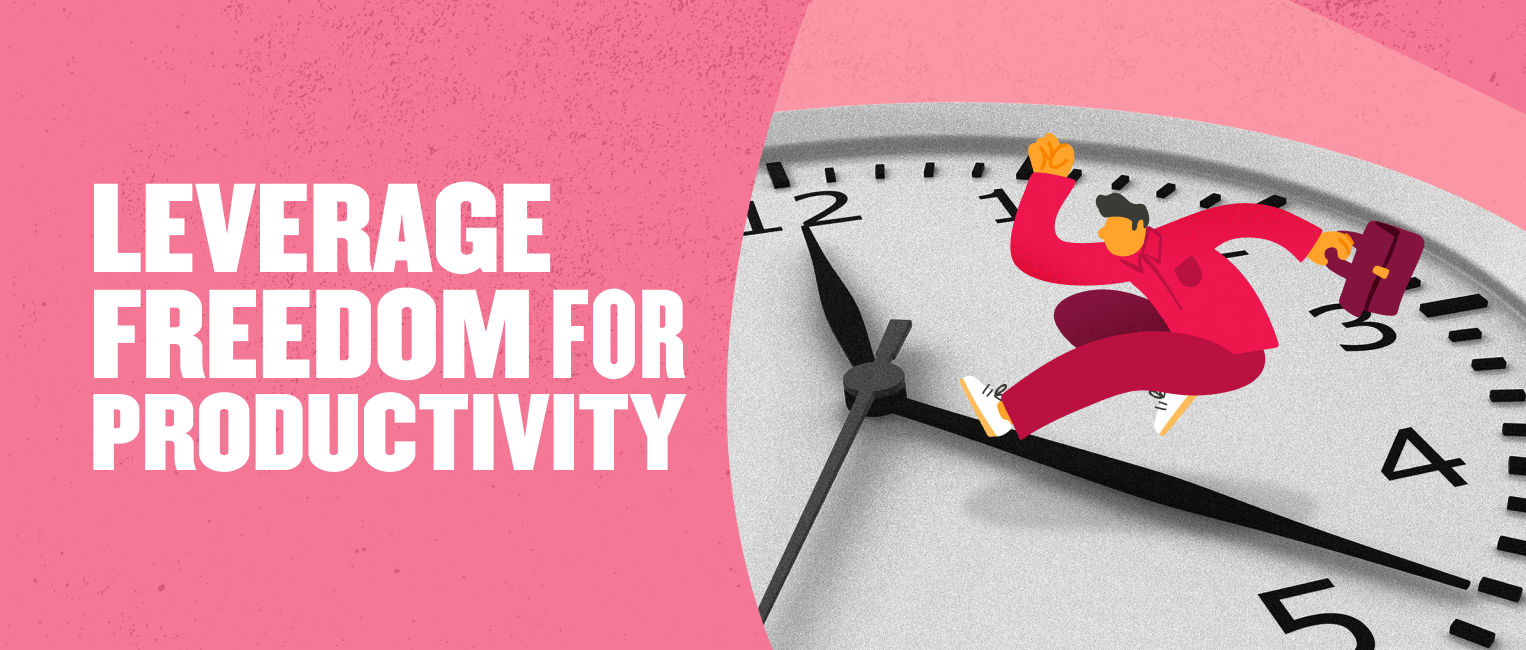Small and medium businesses make up 90 percent of the global business population, and HR sits at the heart of their success.
But being an HR pro at a small business often means wearing many hats—and each one comes with its own unique challenges.
You’re likely building processes from the ground up while struggling to put out day-to-day fires. It’s a demanding role, but one with huge potential for critical impact.
The good news? Smaller businesses don’t have to fight through the layers of corporate bureaucracy that slow down larger organizations. And that’s where you have a full-blown superpower on your side: Agility.
Turn agility into action
A lack of red tape means SMBs can leverage their freedom to allow HR to shape company culture, spark creativity and engagement, and roll out people-first initiatives that actually make a difference.
“Being a smaller business gives you the leeway to create unique benefits to attract and retain your talent. For example, instead of dealing with the corporate back and forth about why you should add or change something, a great HCM will give you quick access to meaningful data to back your case.
Employees feel valued by seeing proof that they are being heard and you aren’t wasting your efforts and resources on stuff your workforce doesn’t care about,” says Karen Longest, people operations manager at Support Partners and SMB HR tech consultant at Longest Lasting Solutions.
And this agility isn’t just for big, structural decisions—it applies to everyday wins, too, like company swag.
“We put up a poll to decide what [swag] we were going to buy and how many we needed … It was simple, but it saved us a lot of money, and employees actually used their swag,” Longest adds.
By embedding this kind of responsiveness into their strategies, HR leaders can help their organizations scale with creativity, optimize resources, and build a workplace where people feel heard—without the roadblocks that slow progress elsewhere.
This kind of agility isn’t just about small wins—it’s the foundation for something bigger.
Agility and flexibility: Small business HR’s superpower
In smaller businesses, HR leaders are architects of change, shaping the direction of the organization’s culture, operations, and strategy from the ground up.
But that’s not all. They are also directly tied to the company’s growth trajectory and innovation roadmap.
Without the layers of corporate approval that slow larger companies down, HR professionals at smaller businesses have the freedom to experiment, adapt, and lead with intention.
This agility allows HR pros at smaller businesses to:
- Lead change management. Quickly implement new policies and evolve them based on real-time feedback, turning flexibility into action that supports your people and your business.
- Accelerate company growth. Align HR strategies with evolving business goals by proactively supporting scaling efforts and workforce development.
- Create innovation-driven programs. Launch people-first initiatives that boost engagement, retention, and productivity.
Of course, limited time and resources are very real challenges for small business HR teams.
But, unlike larger enterprises, where rigid processes can stifle flexibility and creativity, smaller teams can move fast, test ideas, and fine-tune strategies in real time.
This level of flexibility is a major strength, especially when applied to areas like:
- Learning and development (L&D). Personalize training based on immediate skill gaps to support fast growth and boost retention.
- Communication strategies. Tailor messaging to how your team members prefer to engage, increasing transparency and trust.
- Employee engagement. Launch and refine initiatives without corporate red tape, creating a culture where people feel heard, supported, and valued.
- Problem-solving. Respond to challenges in the moment, reducing friction and improving employee satisfaction.
By embedding this adaptability into company culture, HR leaders at smaller organizations can drive meaningful change and create workplaces that thrive on innovation, efficiency, engagement, and (perhaps most importantly) creativity and productivity.
Drive creativity and productivity through HR freedom
Experimentation is your edge. In smaller businesses, the ability to test, learn, and adapt quickly is key to staying competitive, smarter decision-making, and retaining top talent.
When you’re not bound by bureaucracy, you can stay ahead of change instead of reacting to it. Here’s how that freedom can translate into real impact:
Personalized L&D
L&D is vital, with 82 percent of medium-sized businesses providing training in 2023. As HR at a smaller company, you can act fast, tailoring training programs to fit your people’s evolving needs without waiting for corporate approvals.
This flexibility helps make sure your team’s skills stay aligned with changing business demands.
- Benefit. Continuous development drives engagement, career growth, and retention.
- Example. A small HR team introducing microlearning sessions based on immediate skill gaps.
Even small, well-timed programs can make a meaningful difference. And when you pair that with agile, adaptive communication, your impact multiplies.
Adaptive communication strategies
Just like training, communication is most effective when it’s responsive and people-focused.
In small and medium businesses, you can test and refine internal messaging without getting stuck in rigid approval chains. This ensures that the right people get the right information exactly when they need it.
- Benefit. Faster, more transparent communication builds trust, connection, and alignment.
- Example. HR adjusting updates based on team member preferences (like Slack notifications vs. all-hands meetings).
When you adapt your communication style to how your team actually works, you build a stronger, more connected culture that’s equipped to navigate challenges effectively as they crop up.
Real-time problem-solving
Sometimes, your biggest superpower as small-business HR is simply acting fast.
In larger companies, small workplace issues can sit in limbo for weeks or even months. But in a smaller business, you have the power and freedom to address challenges as they arise—before they snowball into something bigger as you wait for corporate sign-off.
- Benefit. Rapid response improves employee satisfaction and prevents small issues from escalating.
- Example. Quickly updating a policy to meet a team member’s urgent need—without waiting for a lengthy approval process.
This kind of agility is a serious advantage larger organizations simply don’t have. With fewer barriers, HR leaders can secure leadership support, refine strategies in real time, and keep people engaged while moving the business forward.
Approach people programming with a “sandbox” mindset
When you’re not bound by corporate layers, you have the freedom to experiment and refine strategies.
That’s a powerful position to be in.
Adopting a “sandbox mindset” means treating HR strategy like a living, breathing process. It means encouraging iterative learning and testing new ideas, policies, engagement strategies, and operational processes as you go. It also lets you gather feedback quickly and refine your approach based on what works best for your people.
A culture of experimentation leads to more effective solutions, stronger engagement, and a more responsive workplace that boosts productivity and satisfaction.
Rather than waiting for industry trends to dictate best practices, HR leaders at smaller businesses can shape them based on direct input from people across the organization:
- Embrace a test-and-learn approach. Treat HR initiatives like mini-experiments. Start with a hypothesis, launch a small-scale pilot, collect feedback, and refine as needed. This iterative approach helps HR teams adapt quickly and stay aligned with business needs.
- Encourage HR professionals to act as internal entrepreneurs. With fewer barriers to innovation, HR can take ownership of people programs, proactively solve challenges, and make bold, people-first decisions that drive businesses forward. Thinking like a business owner—rather than an administrator—helps HR lead with strategy and shape the future of work.
- Use case: An SMB rapidly tests and optimizes a new remote work policy based on direct employee feedback. Instead of waiting for annual engagement surveys, HR sends out short pulse surveys, gathers real-time responses, makes fast adjustments, and changes the policy to reflect evolving preferences and operational needs.
When HR is empowered to iterate, experiment, and learn, you create a workplace that’s not only adaptable but future-ready.
Recommended For Further Reading
Balancing agility with structure
While flexibility is a major strength for HR teams at smaller businesses, it’s even more effective when paired with the right foundation. To truly scale impact, HR also needs to balance adaptability with consistency, compliance, and long-term sustainability.
Rapid decision-making works best when it’s supported by a strong structure:
- Ensure consistency, even as you iterate. HR teams can pivot quickly, but core processes—such as onboarding, performance management, and benefits administration—need to maintain a clear structure. Standardizing templates, policies, and workflows helps maintain stability even as programs evolve.
- Balance flexibility with compliance and best practices. SMBs may be nimble and have more room to maneuver, but HR still needs to navigate labor laws, regulations, and ethical responsibilities. Keeping policies adaptable and compliant reduces risk while reinforcing a people-first workplace culture.
- Avoid burnout by simplifying processes while maximizing impact. Agility shouldn’t come at the expense of wellbeing. Streamline workflows, automate where possible, and focus on what moves the needle—so your team can work smarter, not harder.
The freedom to move fast is what sets SMBs apart—but without structure, it can lead to chaos or burnout. When you build in just enough foundation, you create the space for sustainable impact.
Lean into your HR superpower
One of the greatest strengths of HR professionals, particularly those at smaller businesses, is their ability to move quickly and adapt.
Flexibility gives you the power to make impactful decisions in real time, implement creative solutions, and build a workplace where engagement and productivity thrive.
However, agility is most powerful when paired with thoughtful structure.
By balancing adaptability with a strong HR foundation, small and medium businesses can drive innovation while ensuring long-term stability and sustainability.
Being an HR leader in a smaller business isn’t easy, especially when the average HR-to-staff ratio for small organizations is 3.4. But it’s also a role with unmatched potential to shape company culture, influence strategy, and drive meaningful change.
So embrace your superpower. Take smart risks. Build a people-first workplace where your team can do their best work and thrive.
The future of work is evolving. You have the power to lead the charge.


